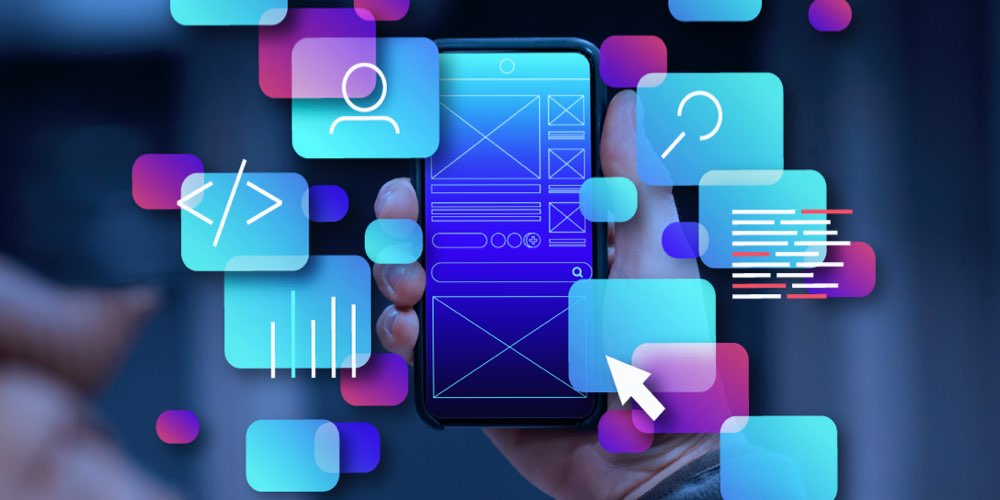In today’s digital age, mobile applications play a crucial role in how we interact with technology, businesses, and each other. From social networking to online shopping and everything in between, mobile apps have transformed our daily lives. This article will explore the mobile application development process, key considerations, and future trends in the industry.
Understanding Mobile Application Development
Mobile application development involves creating software applications that run on mobile devices. These applications can be built for various platforms, primarily Android and iOS, and can be categorized into three main types:
Native Applications
Native apps are developed specifically for a particular platform, using the platform’s native programming languages and tools. For example, Android apps are typically built using Java or Kotlin, while iOS apps are developed using Swift or Objective-C. Native apps offer superior performance, user experience, and access to device-specific features, such as the camera and GPS.Cross-Platform Applications
Cross-platform apps are designed to run on multiple platforms using a single codebase. Frameworks like React Native, Flutter, and Xamarin allow developers to create apps that can be deployed on both Android and iOS. While cross-platform development may sacrifice some performance compared to native apps, it significantly reduces development time and costs.Web Applications
Web apps are essentially websites optimized for mobile devices. They are accessed through a web browser and do not require installation from app stores. While web apps are easier and quicker to develop, they do not have access to many device features and may not provide as seamless an experience as native or cross-platform apps.
The Mobile Application Development Process
Developing a mobile application typically involves several key stages:
Ideation and Planning
The first step in mobile app development is identifying the purpose and goals of the app. This includes defining the target audience, conducting market research, and outlining the core features and functionalities of the app.Design
Once the concept is established, the design phase begins. This includes creating wireframes and prototypes to visualize the app's layout and user interface (UI). A focus on user experience (UX) is essential during this stage, ensuring the app is intuitive and user-friendly.Development
The development phase involves writing the code for the app, whether it’s a native, cross-platform, or web app. Developers work on both the front-end (what users see) and back-end (the server-side, database, and application logic) to create a functional app.Testing
Testing is a critical step in the development process. Various types of testing are conducted, including functional testing, usability testing, performance testing, and security testing. This ensures the app is free of bugs, meets performance standards, and provides a secure environment for users.Deployment
After successful testing, the app is ready for deployment. For native and cross-platform apps, this involves submitting the app to the respective app stores (Google Play Store for Android and Apple App Store for iOS). Web apps, on the other hand, can be launched directly on a server.Maintenance and Updates
Post-launch, ongoing maintenance is essential to ensure the app continues to function smoothly and stays relevant. This includes fixing bugs, adding new features, and updating the app to comply with changes in operating systems and devices.
Key Considerations for Mobile Application Development
User Experience (UX): Designing an intuitive and engaging user experience is paramount. Conducting user testing and gathering feedback during the design phase can significantly improve usability.
Performance: Optimizing the app for speed and responsiveness enhances user satisfaction. Developers should focus on minimizing load times and ensuring smooth navigation.
Security: Protecting user data is critical, especially for apps that handle sensitive information. Implementing strong encryption, secure authentication, and regular security updates are vital for safeguarding user privacy.
Monetization Strategy: Deciding how to monetize the app is essential. Common strategies include in-app purchases, subscription models, advertising, or a one-time purchase fee.
Future Trends in Mobile Application Development
Artificial Intelligence (AI) and Machine Learning (ML): The integration of AI and ML in mobile apps is on the rise. These technologies can enhance user experiences through personalized content, predictive analytics, and intelligent virtual assistants.
Internet of Things (IoT): As IoT devices become more prevalent, mobile apps are increasingly being developed to control and monitor these devices. This integration enhances user convenience and opens up new possibilities for app functionalities.
5G Technology: The rollout of 5G networks promises faster internet speeds and improved connectivity. Mobile apps will leverage this technology to offer more robust features, including high-definition video streaming, augmented reality (AR), and real-time data processing.
Augmented Reality (AR) and Virtual Reality (VR): AR and VR applications are gaining traction across various industries, including gaming, retail, and education. These immersive technologies provide users with unique experiences and innovative ways to interact with content.
Low-Code and No-Code Development: The rise of low-code and no-code platforms enables individuals with limited programming skills to create mobile applications. This trend democratizes app development and accelerates the process.
Conclusion
Mobile application development is a dynamic and evolving field that plays a vital role in our digital lives. By understanding the different types of mobile apps, the development process, and key considerations, developers can create applications that meet the needs of users and succeed in a competitive market. As technology continues to advance, staying abreast of emerging trends will be crucial for harnessing the full potential of mobile apps in the future.
This article is for informational purposes only and does not constitute professional advice.


Hiç yorum yok: